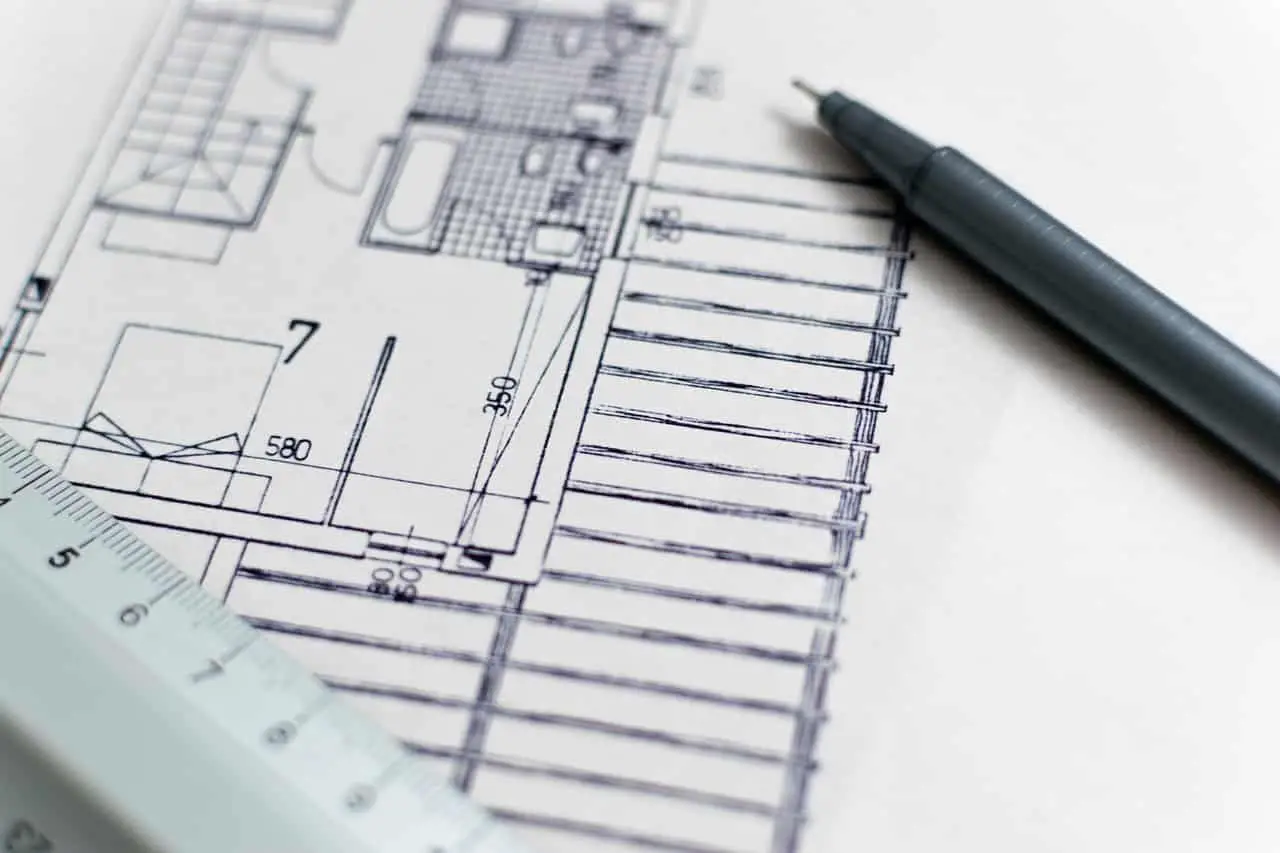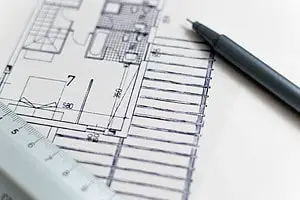The field of architecture is a combination of art and science that involves designing and constructing buildings, structures, and spaces that are aesthetically pleasing, functional, and sustainable. Pursuing an education in architecture provides students with a range of skills and knowledge that can be applied in various career paths within the industry.
From unleashing creativity to gaining hands-on experience, an architectural education offers numerous benefits and opportunities for personal and professional growth. This article explores why pursuing an architectural education is a valuable investment in one’s future. It discusses the benefits of developing strong problem-solving and critical thinking skills, exploring various career opportunities, making a positive impact on society, building a strong professional network, gaining hands-on experience, pursuing personal growth and development, and contributing to the future of architecture.
Whether one is interested in designing buildings, urban planning, or sustainable design, an architectural education provides a solid foundation for a fulfilling and rewarding career in the field.
Key Takeaways
- Pursuing an education in architecture provides a range of skills and knowledge, including problem-solving and critical thinking skills, and can lead to various career opportunities in architectural design, construction management, and urban planning.
- Architects can make a positive impact on society by creating sustainable and safe structures and public spaces, contributing to the fight against climate change, and designing public buildings and spaces for community development.
- Building a strong professional network and gaining hands-on experience through design projects and studio classes are essential for success in architecture, as is pursuing personal growth and development through exploring new projects and design approaches.
- Enhancing one’s architectural education can lead to significant contributions towards the future of architecture by equipping individuals with the skills necessary to stay abreast of the latest advancements in technology and design, creating modern, innovative, and sustainable buildings, and shaping the world around them through their designs.
Unleashing Your Creativity
The pursuit of an architectural education can lead to the development and exploration of one’s creativity, a valuable skillset that can be applied to the design process of various built environments. Aspiring architects learn to think outside the box and come up with innovative solutions to design problems. They develop an eye for detail and a keen sense of spatial awareness, which enables them to create structures that are not only aesthetically pleasing but also functional.
Architectural education instills a sense of creativity that extends beyond the profession. Students learn to approach problems with an open mind and come up with unique solutions. This skillset can be applied to a variety of fields, including business, engineering, and technology.
Creative thinking is a valuable asset in today’s rapidly changing world, and architects are well-equipped to meet the challenges of the future. In conclusion, an architectural education provides students with the opportunity to unleash their creativity and develop a skillset that is highly sought after in various industries.
Developing Strong Problem-Solving and Critical Thinking Skills
By immersing oneself in the study of architecture, individuals can cultivate and refine their problem-solving and critical thinking abilities. Architecture is a complex field that requires its professionals to solve intricate design problems. Architects must take into account various factors such as the environment, functionality, and aesthetics of a building while adhering to building codes and regulations. These design challenges necessitate a high degree of analytical thinking, creative problem-solving, and critical thinking skills.
Architectural education provides students with the opportunity to develop these abilities through hands-on experiences, design projects, and studio classes. Moreover, the training architects receive in problem-solving and critical thinking can be applied in various fields, not just architecture. These skills are transferable and are highly valued in many industries.
Architects are not just designing buildings, but they are also working with clients, contractors, and other stakeholders. They must communicate their ideas effectively, collaborate with others, and think critically to reach an optimal solution. The problem-solving and critical thinking skills that are developed through architectural education can be applied to various professions, making it a valuable asset to any career path.
Exploring Various Career Opportunities
This discussion will explore various career opportunities in the field of architecture, focusing on three key areas:
-
Architectural design: Architects specializing in design work closely with clients to create functional and aesthetically pleasing buildings.
-
Construction management: Construction managers oversee the implementation of these designs to ensure timely and cost-efficient completion.
-
Urban planning: Urban planners use their expertise to develop sustainable and livable communities through thoughtful land use and transportation planning.
Architectural Design
Architectural design is a complex and dynamic process that allows architects to create innovative and functional spaces that impact the way people interact with their environment. It involves the integration of various elements such as the building’s form, function, aesthetics, materials, and technology. Architects need to consider the site’s natural and built environment, zoning regulations, and client’s needs to create a design that meets the project’s requirements.
Architectural design requires a deep understanding of building systems, construction techniques, and materials. It involves the use of computer-aided design (CAD) software to create detailed plans and 3D models that help architects visualize the building’s form and function.
Architects also need to consider the building’s sustainability, energy efficiency, and accessibility to ensure that it meets the current environmental and social standards. The design process requires collaboration between architects, engineers, and contractors to ensure that the project is delivered on time, within budget, and meets the client’s expectations.
Construction Management
Construction management plays a critical role in overseeing the planning, coordination, and execution of a construction project, ensuring that it is completed within the established schedule, budget, and quality standards. Construction managers are responsible for managing the various components of a construction project, including the workforce, materials, and equipment. They work closely with architects, engineers, and contractors to ensure that the project is completed on time and within budget.
The responsibilities of a construction manager include:
- Overseeing the quality of construction work
- Ensuring that the project adheres to safety regulations
- Managing the budget
- Communicating with stakeholders
In addition, construction managers must be able to manage change orders, resolve conflicts, and ensure that the project team remains on track.
A career in construction management requires strong leadership skills, excellent communication skills, and a thorough understanding of construction processes. It is a challenging and rewarding career that offers opportunities for growth and advancement.
Urban Planning
Moving on from the previous subtopic of Construction Management, we now delve into the world of Urban Planning.
Urban planning is a multidisciplinary field that deals with the design, development, and management of cities and towns. It encompasses a wide range of topics, from land use and transportation planning to environmental sustainability and social equity. As an architectural discipline, urban planning seeks to create livable and sustainable urban environments that promote the health and well-being of its inhabitants.
Urban planning is a fascinating field that offers a plethora of benefits and career opportunities. Here are four reasons why pursuing an education in urban planning is worth considering:
-
Impact on society – Urban planners have the potential to shape the built environment of cities and towns, which can have a profound impact on the lives of people who live and work in those areas.
-
Interdisciplinary approach – Urban planning requires collaboration with professionals from various fields, including architecture, engineering, geography, and sociology. This interdisciplinary approach fosters creativity and innovation in problem-solving.
-
Sustainability – Urban planning promotes sustainable practices that reduce the environmental impact of cities and towns, such as reducing carbon emissions, promoting green spaces, and designing walkable communities.
-
Job opportunities – Urban planning is a growing field with a high demand for professionals. Job opportunities include government agencies, private consulting firms, and non-profit organizations.
Making a Positive Impact on Society
The field of architecture offers a unique opportunity for professionals to make a positive impact on society.
Through designing sustainable and safe structures, architects can contribute to the well-being of the environment and the people who inhabit the buildings.
Furthermore, architects can also play a vital role in community development by designing public spaces that promote social interaction and enhance the quality of life for local residents.
Designing Sustainable and Safe Structures
Eco-friendly and hazard-resistant architectural design plays a crucial role in mitigating environmental impact and ensuring public safety. Architects are tasked to design structures that meet the needs of society while minimizing negative effects on the environment. This includes using sustainable building materials, incorporating renewable energy sources, and reducing waste during construction and demolition.
By designing buildings that are energy-efficient and produce low carbon emissions, architects can contribute to the fight against climate change. In addition to environmental concerns, architects also prioritize the safety of the public. Buildings must be designed to withstand natural disasters such as earthquakes, hurricanes, and floods.
Architects use advanced technology and engineering to ensure structures are hazard-resistant and can withstand extreme weather conditions. By designing safe and sustainable buildings, architects can positively impact the environment and the safety of the communities they serve. Here are some key considerations for sustainable and safe architectural design:
- Use of renewable energy sources such as solar and wind power
- Incorporation of green roofs and walls to reduce urban heat islands
- Use of sustainable materials such as bamboo, recycled steel, and reclaimed wood
- Designing buildings to withstand natural disasters such as earthquakes and floods
- Use of advanced technology and engineering to ensure safety and durability.
Contributing to Community Development
Architects have a significant role to play in contributing to community development through their design of public buildings and spaces. Their work involves more than just creating aesthetically pleasing structures. Architects must also consider the functionality of their designs, the impact on the environment, and the needs of the community. Public spaces such as parks, libraries, and community centers are essential for promoting social interaction and bringing people together. An architect’s design can transform these spaces from underutilized areas into vibrant and inclusive gathering places for people of all ages and backgrounds.
Architects can also contribute to community development by designing buildings that meet the needs of the community. This can include designing affordable housing, healthcare facilities, and schools. Architects must consider the needs of the community and design buildings that are accessible, safe, and sustainable. By designing buildings that meet the needs of the community, architects can help to create thriving communities where people can live, work, and play. The following table provides examples of how architects can contribute to community development through their design of public buildings and spaces.
| Type of Building | Contribution to Community Development |
|---|---|
| Parks | Provide a space for social interaction and physical activity |
| Libraries | Promote literacy and lifelong learning |
| Community Centers | Bring people together and provide access to resources |
| Affordable Housing | Provide safe and affordable housing for low-income families |
| Schools | Promote education and provide a safe and stimulating learning environment |
Building a Strong Professional Network
Building a strong professional network is an essential aspect of a successful career in architecture.
Connecting with industry experts can provide valuable insights into industry trends, innovative technologies, and best practices.
Collaborating with peers and colleagues can lead to fruitful partnerships, sharing of ideas, and opportunities for professional growth.
By cultivating a robust professional network, architects can enhance their knowledge and skills, exchange ideas, and stay up-to-date on the latest developments in the field.
Connecting with Industry Experts
Establishing professional connections with industry experts is a crucial step in expanding one’s knowledge and career opportunities in architectural education. These experts serve as valuable resources for aspiring architects, providing them with insights into the latest developments, trends, and innovations in the field. By engaging with industry experts, students can gain a deeper understanding of the practical aspects of architectural education, learn about new technologies and techniques, and explore potential career paths.
Connecting with industry experts can also provide students with access to a range of career opportunities. Many architectural firms and organizations rely on these experts to identify promising talent and recruit new hires. By building relationships with these experts, students can establish themselves as strong candidates for internships, apprenticeships, and entry-level positions.
Additionally, industry experts can provide students with valuable guidance on career development, helping them to navigate the job market and identify potential areas of specialization. For these reasons, it is essential for students pursuing an architectural education to actively seek out opportunities to connect with and learn from industry experts.
- Gain a competitive edge in the job market.
- Learn about cutting-edge technologies and techniques.
- Explore new career paths and areas of specialization.
Collaborating with Peers and Colleagues
Collaborating with peers and colleagues in the field of architecture can enhance one’s understanding of design principles and foster creativity through the exchange of ideas and critiques. By working with others in the industry, architects can gain new insights into different approaches to design, as well as learn about emerging trends and technologies that may be relevant to their work. This collaboration can also lead to the development of new design methods and solutions, as architects bring their unique perspectives and experiences to the table.
In addition to enhancing creativity and expanding knowledge, collaborating with peers and colleagues can also lead to increased job opportunities and career advancement. Networking within the industry can help architects connect with potential clients, partners, and employers, and can also lead to referrals and recommendations that can help build a strong professional reputation.
Additionally, working collaboratively on projects can demonstrate an architect’s ability to work well with others and contribute to a team, which can be an important factor in securing new opportunities and promotions. Overall, collaborating with peers and colleagues can be an important aspect of pursuing a career in architecture, providing opportunities for growth, learning, and professional development.
Gaining Hands-On Experience
Acquiring practical knowledge through real-world experiences in the field is a vital component of an architectural education, allowing students to gain a deeper understanding of the complexities involved in designing and constructing buildings.
Hands-on experience provides students with the opportunity to apply theoretical concepts in a practical setting, allowing them to develop critical thinking skills and problem-solving abilities.
By working on actual building projects, students can gain valuable insights into the various stages of the design and construction process, including site analysis, design development, construction documentation, and project management.
Gaining hands-on experience can also help students develop a range of technical skills, such as drafting, modeling, and construction techniques.
Through site visits, internships, and other forms of experiential learning, students can gain exposure to different building materials, construction methods, and building codes.
This exposure can help students to develop a more comprehensive understanding of how buildings are constructed and how to design structures that are both aesthetically pleasing and structurally sound.
Ultimately, the hands-on experience gained through an architectural education can provide students with a competitive advantage in the job market, as they will have a better understanding of the practical applications of architectural theory and be better equipped to work on real-world projects.
Pursuing Personal Growth and Development
The pursuit of personal growth and development is another key reason why individuals choose to pursue an architectural education.
This involves challenging oneself to learn and grow, both academically and professionally.
It also entails building confidence and independence, which are essential qualities for succeeding in the field of architecture.
Through the process of learning and developing new skills, individuals can achieve personal fulfillment and professional success in the dynamic and ever-evolving world of architecture.
Challenging Yourself to Learn and Grow
Expanding your knowledge and skills in architecture can be achieved by pushing yourself to learn and grow. This can involve challenging yourself to take on new projects, exploring different design approaches, and seeking out opportunities to collaborate with other professionals in the field. By staying curious and open-minded, you can develop a deeper understanding of the complexities of architecture and the ways in which design can shape the built environment.
To evoke emotion in the audience, consider the following nested bullet point list:
-
Learning and growing can be challenging, but it can also be incredibly rewarding. By striving to improve your skills and knowledge, you can gain a sense of accomplishment and satisfaction that comes from tackling difficult problems and creating innovative solutions.
-
Pursuing growth can also help you stay engaged and motivated in your work. When you are constantly learning and exploring new ideas, you are less likely to become bored or complacent.
-
Finally, by pushing yourself to learn and grow, you can become a more valuable asset to your team, your clients, and your community. As an architect, you have the power to shape the world around you, and by expanding your knowledge and skills, you can create more meaningful and impactful designs.
Building Confidence and Independence
Developing confidence and independence is a crucial aspect of an architect’s professional growth, enabling them to make informed decisions and take ownership of their work. Through a rigorous architectural education, students are exposed to a wide range of design challenges and opportunities to develop their skills and knowledge. This process of constant learning and experimentation helps architects build confidence in their abilities to create innovative and functional designs.
Moreover, architectural education empowers students to work independently and take responsibility for their projects. The ability to work independently is a valuable skill for architects, as they often work on complex projects with tight deadlines. Architectural education teaches students how to manage their time effectively, prioritize tasks, and communicate their ideas clearly and confidently. In this way, architects are well-equipped to work on projects with minimal supervision, allowing them to take charge of their work and make important decisions with confidence.
| Advantages of Building Confidence and Independence | How Architectural Education Helps | Examples of Skills Gained |
|---|---|---|
| Ability to work independently | Projects often require individual work, and students learn how to manage their workloads and prioritize tasks. | Time management, prioritization, and self-motivation |
| Confidence in decision-making | Constant exposure to design challenges helps students build confidence in their abilities to create innovative and functional designs. | Critical thinking, problem-solving, and creativity |
| Effective communication skills | Architectural education emphasizes clear and confident communication, enabling students to present their ideas and designs effectively. | Verbal and written communication, presentation skills, and public speaking |
Contributing to the Future of Architecture
Enhancing one’s architectural education can lead to significant contributions towards the future of architecture, as it provides a deeper understanding of design principles and innovative techniques that can shape the built environment for generations to come.
By pursuing an architectural education, individuals gain a comprehensive understanding of the intricacies of the built environment, including the cultural, social, and environmental factors that influence design decisions. This knowledge allows architects to create buildings that are not only aesthetically pleasing but also sustainable, functional, and reflective of the needs and aspirations of the community.
Moreover, an architectural education equips individuals with the skills necessary to stay abreast of the latest advancements in technology and design, which are critical for shaping the future of architecture. Through continued education, architects can learn about new materials, construction techniques, and design software that can enhance their ability to create modern, innovative, and sustainable buildings.
Ultimately, the pursuit of an architectural education enables individuals to make meaningful contributions to the field, shaping the built environment for generations to come.
Frequently Asked Questions
What are the admission requirements for an architectural education program?
Admission requirements for architectural education programs vary depending on the institution and the level of education. For undergraduate programs, a high school diploma or equivalent is typically required, along with a strong academic record and standardized test scores. Some programs may require additional materials such as a portfolio demonstrating artistic ability or letters of recommendation.
Graduate programs typically require a bachelor’s degree in a related field, such as architecture or engineering, and may also require professional experience and a portfolio of work. Additionally, many programs require applicants to submit scores from the Graduate Record Examination (GRE).
It is important to research the specific requirements of each program and to ensure that all materials are submitted by the deadline.
How long does it typically take to complete an architectural education program?
An architectural education program typically takes five years to complete, although some programs may offer accelerated tracks that take four years.
During this time, students will take courses in design, engineering, construction, and history, as well as participate in studio sessions and internships.
The program culminates in a final project, such as a thesis or a design proposal, which showcases the student’s skills and knowledge.
Graduates of an architectural education program may pursue careers as licensed architects, architectural designers, project managers, or construction managers, among other roles.
The field of architecture offers a wide range of opportunities for professionals who are passionate about design, innovation, and sustainability, and who possess strong technical skills and a commitment to excellence.
Can an architectural education lead to other careers outside of architecture?
Yes, an architectural education can lead to other careers outside of architecture. The skills and knowledge acquired during an architectural education are transferable to other fields such as urban planning, interior design, construction management, and real estate development. Additionally, the problem-solving and critical thinking skills developed through architecture coursework can be applied to a range of industries.
Graduates with an architectural education may also pursue careers in academia, research, or advocacy related to the built environment. While an architectural education may prepare students for a specific career path, it also provides a strong foundation for a variety of professional opportunities.
Are there any specific skills or qualities that are essential for success in an architectural education program?
To succeed in an architectural education program, there are several essential skills and qualities that students must possess.
First and foremost, they must have a strong foundation in math and science, as these subjects are integral to understanding the technical aspects of architecture.
Additionally, students must possess strong critical thinking and problem-solving skills, as well as excellent communication and collaboration skills, since architecture is a field that requires close collaboration with clients, engineers, builders, and other professionals.
Creativity, attention to detail, and a passion for design are also essential qualities for success in this field.
Finally, students must be willing to put in long hours and work diligently, as architecture is a demanding field that requires a great deal of dedication and hard work.
What kind of financial aid or scholarships are available for aspiring architects?
There are several financial aid and scholarship options available for aspiring architects.
Many universities and colleges offer scholarships specifically for students pursuing a degree in architecture.
Additionally, professional organizations such as the American Institute of Architects (AIA) and the National Council of Architectural Registration Boards (NCARB) offer scholarships and grants to students.
Some firms also provide financial support to students through internships or co-op programs.
It is important for students to research and apply for as many opportunities as possible to offset the costs of an architectural education.
Conclusion
Architecture is a field that offers numerous benefits and career opportunities to individuals who pursue an education in it. By choosing to study architecture, one can unleash their creativity and develop strong problem-solving and critical thinking skills.
Additionally, exploring various career opportunities in the field, making a positive impact on society, building a strong professional network, gaining hands-on experience, and pursuing personal growth and development are all possible outcomes of pursuing an architectural education.
Architecture is a profession that requires a unique blend of artistic vision and technical expertise. Individuals who pursue an education in architecture learn how to design buildings, spaces, and environments that are functional, aesthetically pleasing, and sustainable.
Furthermore, the skills that are developed during an architectural education are highly transferable, making it possible for graduates to pursue a wide range of career opportunities. Whether one chooses to work as an architect, urban planner, preservationist, or educator, an architectural education provides a strong foundation for success.
In conclusion, pursuing an architectural education can be a rewarding experience that offers numerous benefits and career opportunities. Through this education, individuals can develop their creativity, problem-solving skills, and critical thinking abilities, while also exploring various career options and making a positive impact on society.
Moreover, an architectural education can provide hands-on experience, personal growth and development, and a strong professional network that can lead to success in various fields. For those who are interested in pursuing a career in architecture, an education in this field is a valuable investment that can open many doors and lead to a fulfilling and rewarding career.




























































